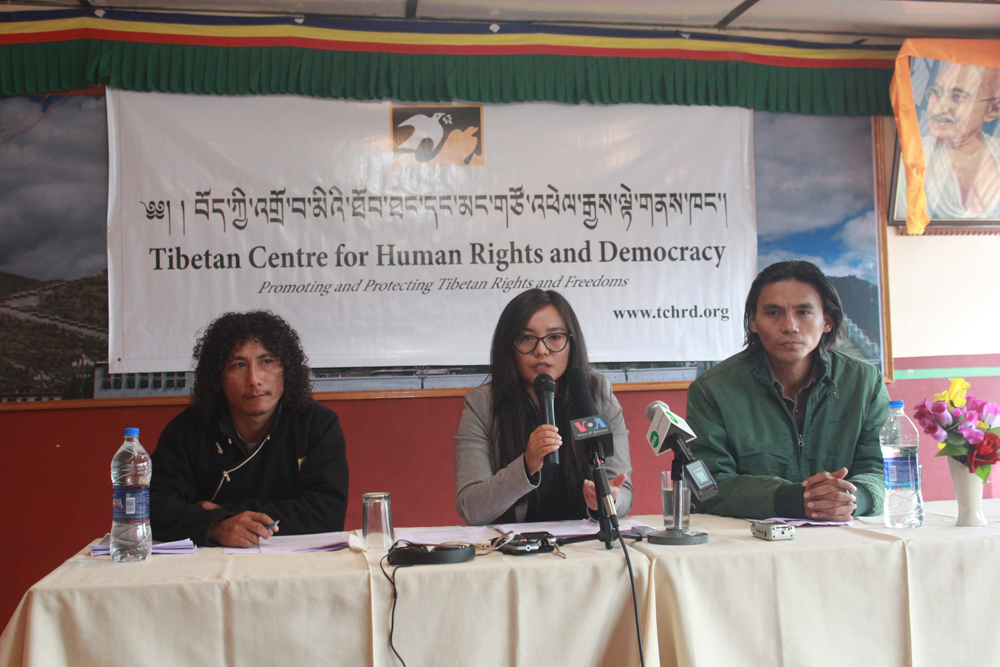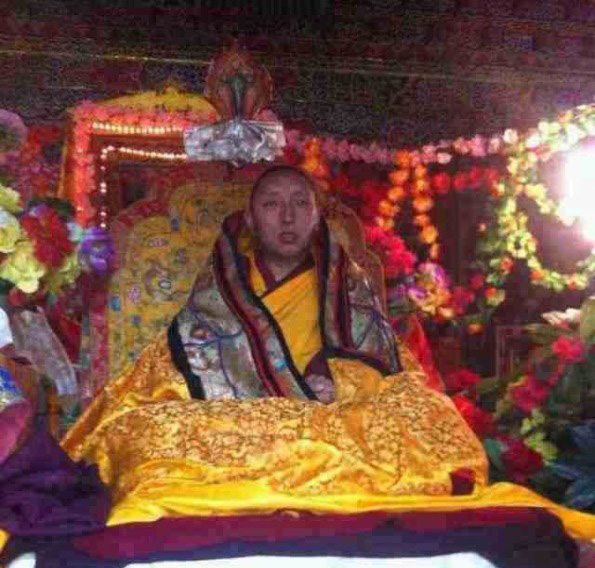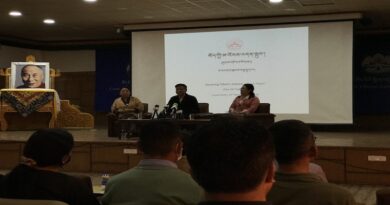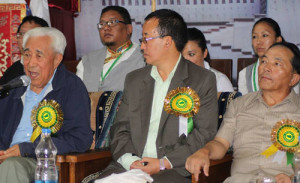TCHRD expresses deep concern over religious repression in Driru county, releases leaked Chinese document
DHARAMSALA, Nov 10: Tibetan Centre for Human Rights and Democracy, a Dharamsala-based Tibetan advocacy group today expressed deep concern over gross human rights violations, including crimes against humanity being perpetrated with the active support of local Chinese authorities in Driru county in Tibet Autonomous Region, which the Tibetan group said ‘has now become one of the most repressed Tibetan areas in the People’s Republic of China’.
Releasing a summarized translation of the contents of a leaked Chinese government document that exposes intensification of state-sanctioned religious repression in the county at a press conference held today in Dharamsala, TCHRD called on the Chinese government to allow international media and human rights groups to visit Driru and its neighbouring counties to independently assess the ground situation.
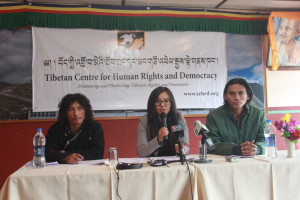
“We call on the Chinese government to allow international media and human rights groups to visit Driru and its neighbouring counties to independently assess the ground situation We are deeply concerned that gross human rights violations, including crimes against humanity are being perpetrated with the active support of local Chinese authorities in Driru,” said Tsering Tsomo, executive director of TCHRD.
The document, simply referred to as Document No. 224, issued by the Driru county government on Sep 19, 2015 calls for the intensification and deepening of the campaign to purge and reform religious institutions in the county. It contains a set of regulations divided into three chapters, 24 sections and 74 articles and has been circulated among all the relevant Chinese officials in the county.
It also cites seven other regulations that are being implemented to intensify many existing restrictions on Tibetan religious institutions and lay community. The seven regulations are 1) Regulation on dealing with officers failing to maintain stability in Tibet Autonomous Region, 2) Regulation on dealing with illegal crossing of border to attend religious gatherings, rumormongers, sharing harmful publications, and travelling outside TAR for further studies (issued by Driru county government for temporary implementation), 3) Penalties for failure to implement the work of reforming, purging and normalizing religious institutions (issued by Driru county government for temporary implementation), 4) Regulation on punishing government officers, 5) Registration manual for monastic enrolment in Driru county, 6) Decree on religious work and 7) TAR religious work decree.
TCHRD says the regulation ultimately aims to turn Tibetan monks and nuns into spokesperson of the communist party and the government by intensifying attempts to replace religious vows of monks and nuns with state ideology through mandatory political education.
Reminiscent of the Cultural Revolution era, the regulation controls every aspect of the monastic life from finance to selection of reincarnate lama to the movement of the monks and nuns.
“This regulation evokes the memory of Cultural Revolution when the whole structure of the society, from top to bottom, was subjected to sweeping state scrutiny and punishment,” said Tsering Gyal, Tibetan/Chinese researcher at TCHRD.
“The regulation even targets independent spontaneous activities such as meditation practiced by yogis and hermits who do not have much contact with the society. Even the language of the regulation is genocidal as words such as Tsangsel, which in Tibetan means clean up are used in the original text,” said Tenzin Nyingjey, senior researcher at TCHRD.
The regulation also carries an article on the issue of worshipping Shugden, a controversial deity whose spiritual legitimacy as a protector has been questioned by His Holiness the Dalai Lama who advised Tibetans against its worship stating that it promotes sectarianism. The regulation states that monks and nuns who ‘create problems’ on the issue of Shugden shall be expelled and subjected to six months of legal education. If lay Tibetans ‘create dispute’ over the issue of Shugden, they will be denied the right to harvest Yartsa Gunbu, one of the primary sources of income for majority of residents of Driru. The regulation further states that if found guilty of violating the law, the law enforcement officials will punush them accordingly.
Rather than governing Tibet in accordance with ‘rule of law’, TCHRD states that Chinese authorities hold Tibetan livelihood to ransom by denying harvest of Yartsa Gunbu and use law as a tool of oppression and a means to ensure compliance from Tibetans to unpopular policies.
“Implementation of these regulations has increased repression and human rights violations. Rather than governing Tibet in accordance with ‘rule of law’, Chinese authorities are using law to encroach upon fundamental rights and freedoms of local Tibetans. Law is used as a tool of oppression and a means to ensure uniform compliance to unpopular policies,” TCHRD said in a statement released at the press conference.
“This regulation is the latest in a series of regulations passed by local authorities in Driru particularly since late 2011. Chinese authorities have faced sustained and stiff opposition to its implementation of ‘Mass Line’ campaigns in Nagchu prefecture, particularly in Driru and Sog counties. The fact that the current regulation was passed and implemented since September this year shows that the situation in Driru remains tense and volatile,” Ms Tsering Tsomo said.
Replying to a question from a reporter on why Nagchu prefecture in TAR is being specifically targeted, Tsering Gyal said: “Since Xi Jinping took power in late 2012, Xi initiated anti-corruption campaign and ‘mass line’ campaign to legitimize his and the Communist Party’s authority. In TAR, authorities decided to target Nagchu prefecture, specially Driru and Sog counties to initiate mass line campaign because these areas have been a hot bed for protests, including self-immolations against the Chinese government since the pan-Tibet uprising of 2008. The Chinese authorities fear that the self-immolation protests and the spirit of resistance witnessed in these counties may have a ripple effect and spread to other areas in the TAR.”
“The issue of self-immolation is one of the major reasons for targeting Driru and neighbouring counties in Nagchu prefecture. During 2011-12, Chinese government announced that no self-immolation has taken place in TAR stating that the two self-immolations in the Tibetan capital Lhasa in May 2012 were carried out by Tibetan residents of areas outside the TAR. Later, when it became known that several self-immolations have actually taken place in Driru and other places in Nagchu, the claims were exposed as blatant lies and it became a huge embarrassment for the Chinese government. And that’s also one of the reasons why severe restrictions have been placed on the movement of Tibetans at the border between Nagchu prefecture and TAR,” Tsering Tsomo added.

